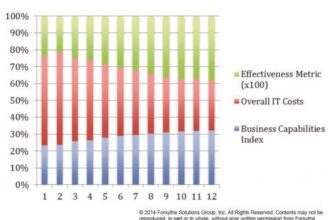For many people or organizations new to social media, sentiment seems like a good place to start an analytics approach. Questions, like:
For many people or organizations new to social media, sentiment seems like a good place to start an analytics approach. Questions, like:
- do our customers like us?
- do they like our product or service?
appear to be relevant and important questions. Who doesn’t thinking know if your customers and partners like you is important? Unfortunately, sentiment out of context does not give you the actionable business insights your organization can use to improve your products or services, engage with consumers on a particular issue or narrow down what a customers liked or disliked about your product. Sentiment without context is sort of like overhearing someone say they like their coat but without all the interesting details about why they like their coat:
- that it’s new
- it’s made from recycled leather
- they bought it from a locally-owned business
- they donated their last coat to a socially-conscious business
- they’ve recommended the brand and the business to their friends on Facebook
When working with sentiment it may be more constructive to think about what you want to understand from consumer’s positive, negative or neutral feedback. In the image below, we’ve captured consumer conversations around TV shows. We then applied two different filters to further refine our analysis and then finally a sentiment filter to those isolated conversations.
The first set of charts reflects 1st person conversations volume around each of the TV shows. The 1st person filter is used to isolate conversations that are most likely to contain a person’s opinions and impressions. Then a sentiment filter is applied to assign positive, negative and neutral sentiment to each conversation. The resulting graph shows the breakdown by show. Not only are you able to view volume, breakdown of sentiment by show but also how shows compare to each other.
The second set of charts shows activity related to consumer behavior, specifically around the activity of watching a show. The applied sentiment filter surfaces positive, negative or neutral conversations directly related to people in the act of watching a specific program. The context is defined as people watching the show, their sentiment related to watching the show and the comparison between each show.
The point with both of these examples is that sentiment analysis can be much more powerful if you begin to create a setting or context around your research. For example, let’s say your a CPG company and you have released both a new product and campaign to support the release. You may want to consider an analytics strategy that isolates social media conversations:
- by geography, especially if you have nation-wide distribution
- by demographics, particularly if you sell alcoholic beverages
- 1st- person posts so you are including consumer opinion
- by brand or category
- by a competitor’s brand or category
then apply your sentiment or other consumer intention dimension you are trying to surface. The overriding point is to think less about identifying general likes or dislikes and create the conditions where the likes and dislikes are specific enough and provide enough context for you to act.
Check out this video that provides a visual reference for making the most out of sentiment analysis.
How to use sentiment analysis when monitoring social media conversations from Collective Intellect on Vimeo.
Thanks for reading!







